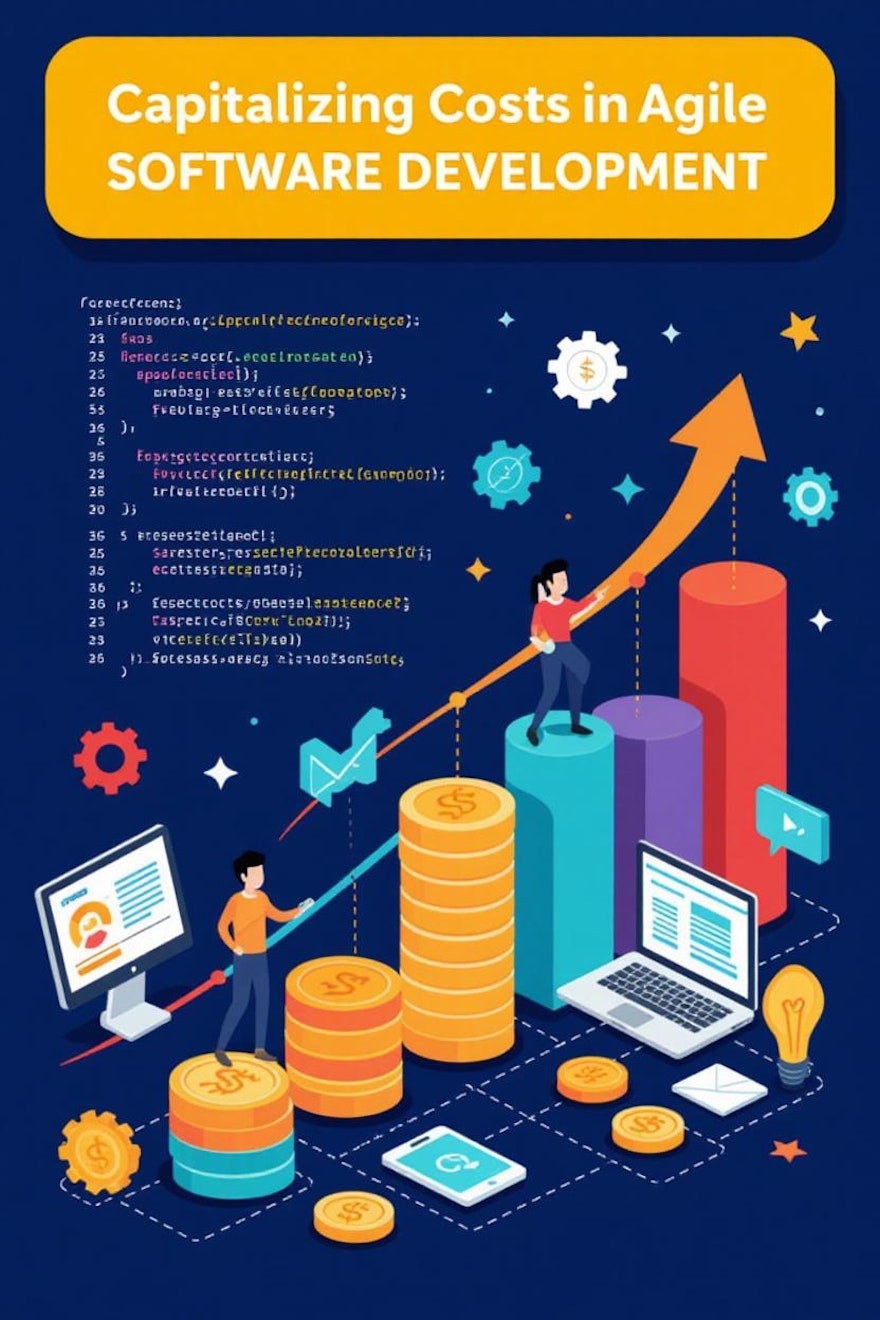In the fast-paced world of software development, Agile methodologies have revolutionized how teams build products—emphasizing flexibility, collaboration, and rapid iterations over rigid plans. But what happens when financial reporting enters the chat? For many organizations, capitalizing costs in Agile projects isn't just a nice-to-have; it's a necessity for accurate balance sheets, tax compliance, and investor transparency. Unlike traditional waterfall models with their neat, sequential phases, Agile's iterative sprints and evolving backlogs can turn cost capitalization into a head-scratcher.
If you're a CFO staring down a Scrum board or a product manager juggling burn-down charts and depreciation schedules, this post is for you. We'll unpack the unique challenges of Agile capitalization—especially the absence of those tidy phased stages—and explore practical ways to track and allocate costs without losing your sanity (or your audit trail). Let's dive in.
Why Capitalization Matters in Software Development (Quick Refresher)
Before we get into the Agile-specific challenge, a quick primer: Capitalizing development costs means treating certain expenses (like salaries, tools, and contractor fees) as long-term assets on your balance sheet rather than immediate operating expenses. This is governed by standards like ASC 350-40 (in the US) or IAS 38 (internationally), which allow capitalization once a project reaches the "technological feasibility" stage and is intended for sale or internal use.
In a waterfall world, this is straightforward: Costs rack up predictably during design, coding, and testing phases, and you capitalize them as milestones are hit. Agile? Not so much. Its core principles—delivering value in small, shippable increments—clash with the need for clear boundaries. But fear not; with the right strategies, you can make it work.
The Big Challenges: Why Agile Defies Traditional Capitalization
Agile's beauty is also its beast when it comes to finance. Here's where things get tricky:
1. No Clear Phased Stages—Just a Continuous Loop
- Traditional models have gates: "Design phase complete? Capitalize those costs." Agile, however, is all about sprints—2-4 week cycles where planning, development, testing, and even deployment happen concurrently. There's no "end of phase" bell; instead, you have a product backlog that evolves with user feedback.
- The Pain Point: How do you decide what's capitalizable? Is time spent refining user stories "research" (expensed) or "development" (capitalized)? Auditors love black-and-white rules, but Agile's dynamic nature makes it more complicated.
- Real-World Impact: Without phases, costs blur across iterations, risking under- or over-capitalization. One study from Deloitte noted that 40% of Agile-adopting firms struggle with this, leading to restatements or compliance headaches.
2. Iterative Changes and Uncertainty
- Agile thrives on adaptability—requirements shift mid-sprint, features get reprioritized. This means costs aren't linear; a "finished" story today might need rework tomorrow.
- The Pain Point: Capitalization rules require evidence of probable future economic benefits. In Agile, that "probable" feels more like a educated guess, especially for exploratory spikes or proof-of-concepts.
- Real-World Impact: Volatile backlogs can inflate capitalized assets if you're too optimistic, or force premature expensing if you're overly cautious, skewing your financials.
3. Resource Allocation Across Teams
- Cross-functional teams (devs, designers, QAs) work in tandem, but not all efforts qualify for capitalization. Overhead like retrospectives or backlog grooming? Usually expensed.
- The Pain Point: Tracking who did what, when, gets granular fast. Multiply that by distributed teams or contractors, and you're drowning in timesheets.
These challenges aren't insurmountable, but they demand a shift from phase-based thinking to value-based tracking. Enter: solutions tailored for the Agile era.
Cracking the Code: How to Track and Capitalize Costs in Agile
The good news? Modern tools and frameworks make cost tracking feasible without reverting to waterfall rigidity. The key is tying costs to delivered value (e.g., completed user stories) rather than arbitrary phases. Here's a playbook to get you started:
1. Define Capitalization Triggers Based on Agile Artifacts
Ditch phases; use sprint outcomes as your guideposts. For instance:
- Pre-Feasibility: Expense everything in discovery sprints (e.g., market research, initial prototypes).
- Post-Feasibility: Capitalize costs for stories that meet "done" criteria—like coded, tested, and demo-ready features with clear business value.
Pro Tip: Document your policy upfront. Create a simple matrix:
Agile Artifact Capitalizable? Rationale User Story Completion (with acceptance criteria met) Yes Demonstrates technological feasibility and future benefits. Sprint Planning/Retros No Planning and learning activities. Bug Fixes on Capitalized Features Partial (prorate) Allocate based on effort tied to the original asset. Technical Debt Refactoring Case-by-case If it enhances a capitalized feature, yes; otherwise, expense. This keeps things auditable and aligned with standards like ASC 350-40.
2. Leverage Quantify for Seamless Time Tracking and Cost Allocation
Quantify, a powerful time-tracking and cost allocation platform, is a game-changer for Agile teams tackling capitalization. It integrates with Agile project management tools like Jira or Azure DevOps to streamline cost tracking across sprints/iterations.
Why It Solves Tracking: Quantify eliminates manual timesheet chaos by automating cost splits. It also supports compliance with ASC 350-40 by providing audit-ready reports that tie costs to specific deliverables.
3. Adopt Iterative Auditing and Value Mapping
- Treat capitalization like an Agile practice: Review and refine quarterly.
- Map costs to epics (larger features) rather than sprints. An epic spanning multiple sprints gets capitalized once it's minimally viable.
- Conduct "capitalization ceremonies" at sprint reviews: Team demos value, finance green-lights allocation.
- Overcoming Uncertainty: Build in buffers for rework (e.g., expense 10-20% of sprint costs upfront, capitalize the rest post-review). This mirrors Agile's empirical approach—inspect and adapt.
Wrapping Up: Agile Capitalization as a Team Sport
Capitalizing costs in Agile isn't about forcing square pegs into round holes—it's about evolving your processes to match the methodology's spirit. The lack of phased stages? It's a feature, not a bug, pushing you toward more precise, value-driven tracking. By defining clear triggers, wielding the right tools, and fostering cross-team collaboration, you can turn financial compliance into a competitive edge.

